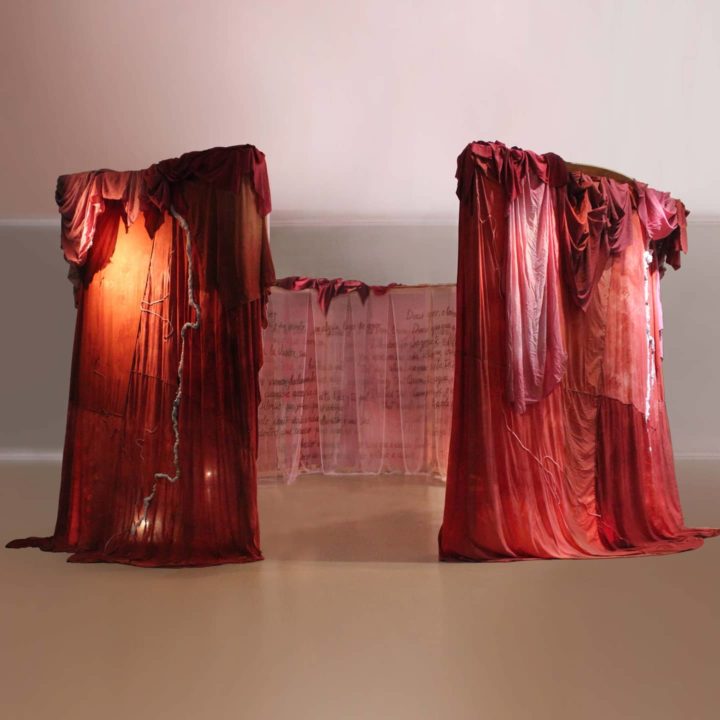Individually I consider myself an optimist, but collectively I am an absolute pessimist. We have no choice but to continue working, in the hope that culture, education and tolerance will be weapons of mass construction with which to confront violence and stupidity.
Joan Miró
Carl Jung said that art “is that which will save us from barbarism”, and on this definition, Gabriel Manzo reflects on what makes us barbarians in today’s society. Despite the supposed evolution that we have achieved scientifically and technologically, he wonders about the reasons that give rise to the loss of a sense of humanity and what leads us to be less and less empathetic, more and more asocial and, on occasions, violent.
What has humanity ceased to look at in order to almost completely lose sight of its most identifying values? Manzo has asked himself about this in many different ways and throughout his artistic project he has gone to the rescue of those territories where life recovers its value and links us to the true sense of humanity, the others.
“Without the look of the other, the work is just an object, and to think about it without taking it into account is meaningless,” he says.
He affirms that the democratic sense of art does not mean that everyone can do, it entails a commitment and a craft that not many manage to accept. A large part of the actors on the contemporary scene, in pursuit of breaking with the universal standards of beauty of supposedly classical thought, bet on aseptic manifestations, lacking in content and all visual and intellectual poetics, trivialising with their discourse the most essential sense of artistic expression, producing catalogues of routine exercises that border on the experimental and vacuous, failing to offer the public a transcendent aesthetic experience that places us in front of one of the most important senses of art: contemplation.
Both in his early series such as “Más desnudos que la piel” or “Cartas sin escribir”(fig1), where his questions were oriented towards the sense of sudden and permanent absence, as well as in his more recent practices, which include series such as “Traición al sol”(fig2) where he plays with the emotions that define love, betrayal, desires or happiness; or “La macchina del fango”(fig3) where his questions raise the why? as well as the reimagining of reparation through mud as a constructive possibility, Manzo has tirelessly searched for, and questioned us to make us reflect on an essence that this society has been insensitively discarding, and which, like art, it believes will only save us from barbarism.
The art critic, Avelina Lesper, maintains that “current art lacks mastery of technique, workmanship and often proposals that elevate the human being above mediocrity”; and that “contemporary art only goes after interests and economic success, leaving aside all aesthetic and transcendent intentions, even going so far as to show only terror, pain or everything that is unpleasant”. Similar ideas are held by the art historian Robert Florczak and the former Director of the Institute of Contemporary Art in London, Ivan Massow. Although he maintains some points of coincidence with the Mexican, among many opposites, Manzo demonstrates the value of contemporary art and proposes a series of installations that travel diametrically to these pessimistic visions, where technique and composition are not left to chance and the idea of an elaborated project is intelligent and undeniable. It
immerses itself in the most cardinal condition of the sense of humanity and goes to the rescue of an essence that transports us to that which defines us as a species, memory.
Loving to reign
In series such as “bridges” -2005/2012- Manzo used geography and its accidents to allude to the experiences that build the trajectory of emotional journeys that mark existence as cartographies, where with impeccable workmanship and a search for colour of absolute richness, he managed to print those maps (fig4). Redoubling the bet, in “Rey de corazones” he appeals to the rescue of old stories that propose the valuation of that which has given us identity, language and belonging.
His new work proposes a sensorial experience through three different spaces, and although their logics are unequal, the circularity is theirs and relates them, giving shape to an aesthetic game in which the scenography permanently invites us to recompose the interior and exterior space, the internal and the external, which Manzo knows how to represent very well.
He proposes a design of space in which, in the manner of a game, he proposes multiple routes. Sometimes erratic, sometimes insinuated, sometimes free, sometimes suggested… but always under the premise of freedom.
Manzo doesn’t care if we understand him, he knows that at some point he is going to touch us and this is sufficient justification for his absolute artistic honesty. He incites us to move in space and to put into play sensorial and exploratory practices that give shape to a complex fabric of perceptions and that undoubtedly lead us to our own frameworks and to the encounter with the many substrates of memory.
His material choices in each instance are not fortuitous, he knows very well that glass is as fragile as memory, but he confronts us with it until we reach the mixed reverie of the textiles that envelop us to reconstruct our own vital text. For Gabriel Manzo, time is not time, he calls it eternity.
There are three specific moments in this installation, and each one of them confronts us with the possible ways of relating to our past, and at the same time, irremediably forces us to remember it, making it present, perhaps trying to restore a future.
The wandering, trying to decipher a labyrinthine encrypted message that presents us with texts in a different language, as if it spoke to us of a time that we do not recognise but that surely corresponds to us and that for some reason we pass through with a certain unconsciousness. These texts scattered in 60 wooden and polychrome glass boxes refer to a dialect and are spread out geometrically in five equidistant concentric circles that make up this labyrinth. It proposes a spontaneous journey, without forcing us to read a linear message and where the only important thing is the stimulus that each box can provoke, taking us to other times and returning us to this one to rethink and re-feel, permanently.
… The approach suggests access to the most ancestral because it leads to the genealogical, the primordial biology. It is an invitation to travel freely, but trying to discover and register the path traced.
The surface achieved in the devices, with monochrome textures, supports the aroma of a rose bush, the warmth of the sun, the strength of the wind or the silence of breathing. A poetics that manifests itself through manual strokes that reveal the subjective trace. The text thus treated also outlines the vibration of the voice that speaks it and is transformed into a visual, resonant and significant object. ….
Graciela Zuppa
The invitation refers to the recomposition of time and space. In this wandering, the objects present from the inside out, a progressive passage from silver to red, where the words disintegrate from the sentence to the half-words or their partialities, as if it were something that is not remembered or that, lost, one tries to recover. His plastic skills are very present, in a technique that is both complex and subtle, in which he uses silver leaf and enamels to mirror the glass and enhance the surface. These skills allow him to move forward and backward in the plane, showing and hiding at the same time, provoking. We can only go around, in one direction or the other. We can get closer to discover textures or possible
We can approach the discovery of textures or possible textures by playing an enigmatic game by altering the initial symmetry, managing to disarticulate its stillness with movement.
Surrounding, as an experience that places us at a distance with few options for movement, but given the need to embrace everything, distance is necessary. It would seem that the artist forces us into this look, but evidently it is a “jewel”, a jewellery box, a suit of armour, something that, faced with the first experience, does not allow us to enter, only to imagine a possible interior.
The designed piece evokes the qualities of the casket as an artifact that protects from the looks and allows the custody of something qualified and appreciated. Opening it would imply attending a revelation knowing that if the opening is illegitimate it would be full of dangers, hecatombs or
adversities. But, if its spatial dimension were to keep stories to be uncovered, it would enable the interweaving of narratives, silences, pressing questions and re-editing dialogues.
Graciela Zuppa
She presents us with a golden object, with clear signs of antiquity, as if it were a find whose shine is due to the wear and tear of its use, or to the insistent intentions of manipulating it in order to open it. Even so, it is perceived as attractive and resplendent. It imprints a certain alchemy on us that leads us to ask ourselves innumerable questions. The external surface speaks to us of a very remote time, its rust and decayed texture is decisive. But at the same time it presents a magic and an intrigue that makes us think that inside there is something alive and latent. It is not exempt from play. Turning and turning with no greater success than to remain on the outside makes it an unobtainable object, although, attracted by its shine, it allows us to define the time we will spend in front of the “jewel” trying to discover its secret. This playful attitude keeps us captive in its abstraction and allows us to intuit over time, its hidden assumptions.
Hidden assumptions.
To enter, in the most visceral sense, means to plunge into a translucent space where the word seems to be carved into the skin… or deeper still. Layers upon layers of fabrics that propose a superimposition of texts that present us with multiple languages, surely anchored in experiences and journeys travelled by the artist but which, due to their abstraction and plastic play, allow us to include our own registers, our other belongings. On the other hand, as if it were a palimpsest, the texts traced on each transparency are shown as stratifications of each person’s history and as spaces that catalyse their own changes. In this way, Manzo constructs a warp that allows us at times to brush sensually against the internal textures of a place that envelops us in a dreamlike atmosphere. The object is imposing, with an exterior presence that is practically incomprehensible, but from its grand entrance it proposes that we slip into its cavity to take part in our own journeys.
Access to the “room” implies an exchange with other voices. In this monumental square, the light leads us to meditation, although it is possible that we are not alone in this space of introspection. Likewise, the solitude within the space will never be alone, the drum of a heartbeat resounds to which voices are superimposed that seem to come from within the folds of those layers: “Hasta el cielo ida y vuelta”; “Cor, cor, cor, fan els batecs del meu cor”; “Te echo tanto de menos”; “Com’è dolce essere amato da te”… voices that transport us to other places and bring us closer to questions that invite us to go in search of them. And because somehow there is always a tearing, in these intentions the flayed flesh reappears, that which was the anteroom for the meditation that exposes the most intimate, the deepest.
Manzo resorts firmly to the rescue of the parental tradition, and his craft is exquisite and at times almost superb. He naturally resorts to the manual elaboration of sewing, twisting, tapestry and carpentry, developments that are added to those of his own craft. The current colour that modifies the original fibres refers to this knowledge, altering their appearance by means of the mixtures, times, airing and drying that the primitive dyers guarded so zealously. Pressing, tightening, shading, illuminating; verbs that are permanently intertwined in his craft in order to achieve an expressive density. It is a matter made of folds and folds, an image that can well be transferred to the labyrinths of memory… and always aimed at unveiling secrets.
The creator intimates to challenge stillness and carefree pause and begins to mobilize the visiting actor; Gabriel Manzo provokes, impatience and amuses at the same time.
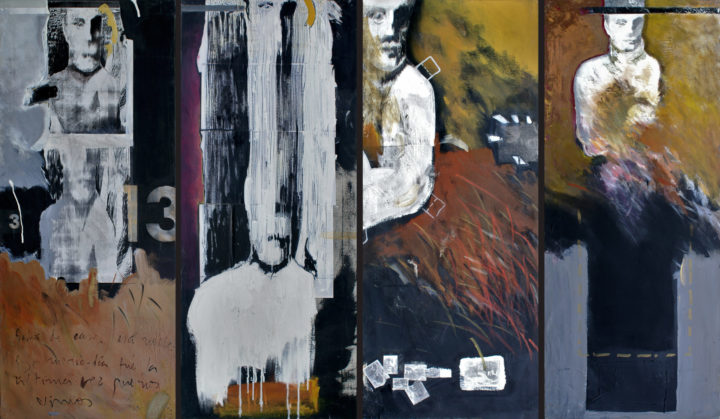
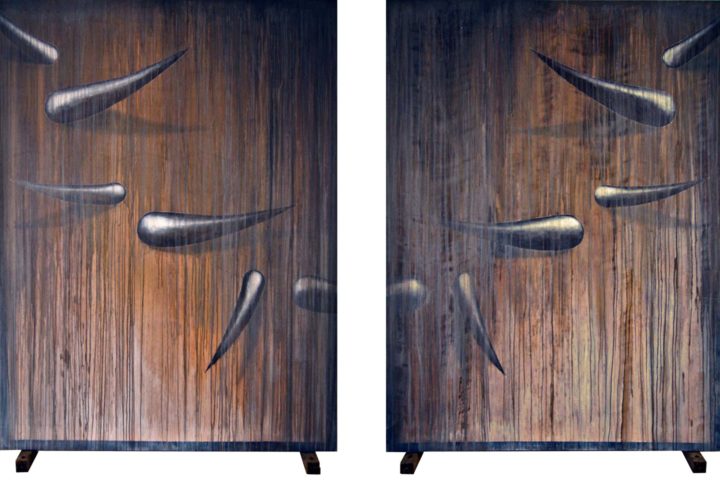
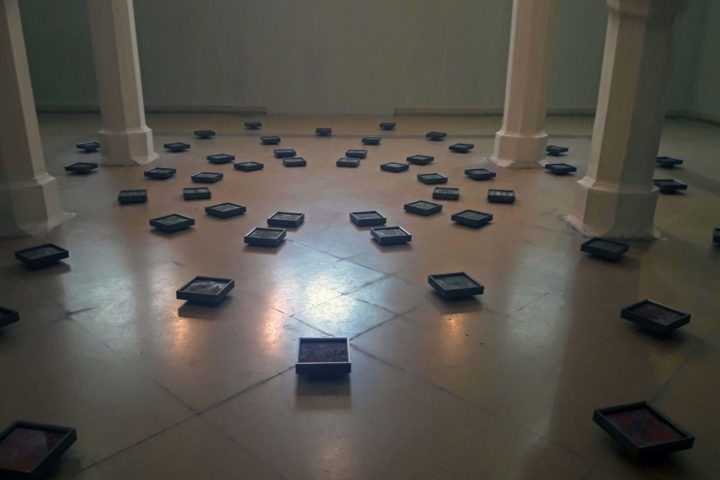

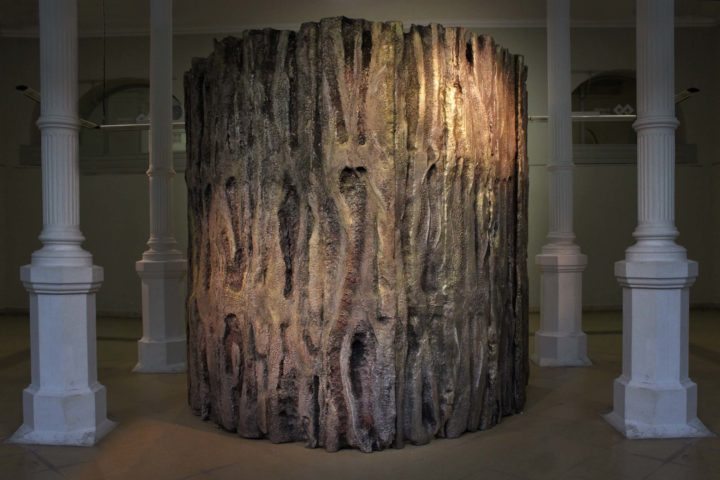
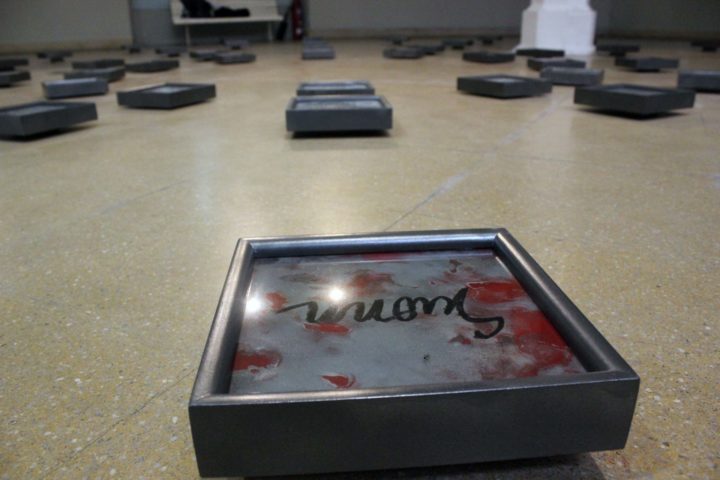



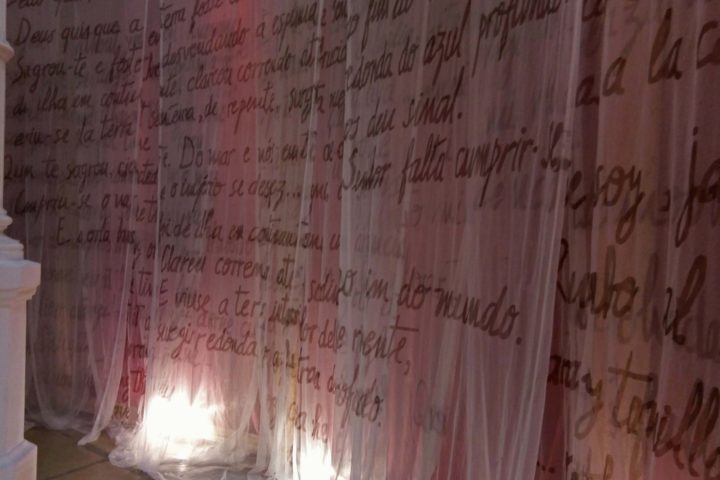
About quoted texts:
Graciela Zuppa: Professor and BA in Art History, Magister Artis in History. Adjunct Professor and Postgraduate Professor in the Master’s Degree in Heritage Management and Intervention at the UNMdP. Professor in the Doctorate of Architecture – FAUD, Category II Researcher and Director of research groups. Director of scholarship holders and Co-Director of doctoral thesis. Member of the Evaluation and Scientific Committee of the journals NEXOS, UNMdP; TERRAS D AMÉRIQUES, University of the West Indies and Guyana; ETUDES CARIBÉENNES, Martinique and GEOSPORT FOR SOCIETY, Romania.


